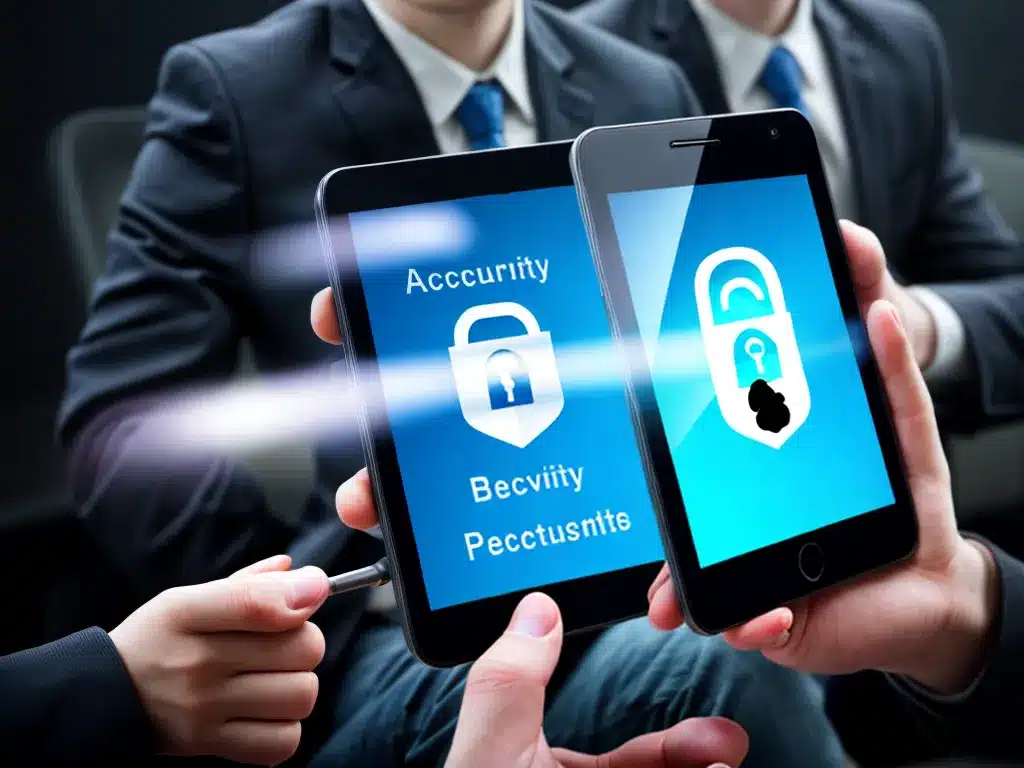
Mobile Device Security Best Practices for Employees
As a security-conscious employee using mobile devices for work, there are several best practices I should follow to keep company data safe:
Set Strong Passcodes
Using strong passcodes is one of the most basic but important mobile security measures.
- I should set my device to auto-lock after 1-2 minutes of inactivity, requiring a passcode to reopen.
- My passcode should be at least 6 digits containing a mix of numbers, letters, and symbols.
- I should not use easily guessable passcodes like birthdays or repeating patterns.
- For extra security, I can enable two-factor authentication and use biometrics like fingerprint or face recognition.
Regularly changing my passcode every few months ensures that even if it is cracked, it cannot be used for long. I should never share my passcode with anyone, including coworkers.
Limit App Permissions
When installing new apps, I need to pay close attention to the permissions requested and only allow those necessary for the app’s functionality. Location, contacts, microphone/camera access and other permissions can expose my data if not properly constrained.
Settings like limiting background app refresh and disabling unused services further restrict unnecessary access. I should steer clear of suspicious third-party app stores and stick to reputable sources like Apple App Store or Google Play Store. Downloading the latest app updates provides critical security patches.
Caution with Public Wi-Fi
Connecting to public Wi-Fi networks at places like cafes and airports poses risks of snooping or man-in-the-middle attacks. Wherever possible, I should avoid conducting work over public Wi-Fi, opting for secure private Wi-Fi or mobile data instead.
If using public Wi-Fi is unavoidable, I must take precautions like using a trusted VPN, disabling sharing services, avoiding sensitive transactions, and not connecting to unfamiliar networks.
Encrypt Data
Enabling built-in encryption on my mobile device provides an added layer of security in case it falls into the wrong hands. Encrypting sensitive company data like documents, presentations, and spreadsheets reduces the damage from potential loss or theft.
Before travelling overseas, I should check encryption policies for that region and their stance on disclosing passwords to authorities if demanded. I should never store unencrypted sensitive company data on personal cloud storage services.
Update Software
Mobile devices are just like computers when it comes to software vulnerabilities that can be exploited by hackers. I need to promptly install major and minor OS updates as well as app updates as soon as they become available.
Updates frequently contain important security fixes, so delaying them makes the device more prone to bugs and breaches. Jailbreaking or rooting the device to bypass security controls is an unacceptable risk.
Install Security Apps
Specialized mobile security software provides extra protections that complement the built-in features:
- Anti-virus apps detect and block malware.
- Virtual private networks (VPNs) secure internet traffic.
- Anti-theft apps help locate lost devices.
- Mobile device management (MDM) enables centralized control.
I should research reputable apps that are compatible with my device and implement them as per company policy. But these apps do not replace the need for caution in daily usage.
Avoid Phishing Attempts
Cybercriminals regularly conduct phishing attacks targeting mobile users via calls, texts, emails, and apps. I should be vigilant against unsolicited communications asking me to click suspicious links, download attachments, or give up personal information.
Phishing red flags include typos, threats, unrealistic urgency, requests for sensitive data, unfamiliar sender addresses, and incorrect details about me. I must report suspected phishing attempts to the IT security team per company incident response policy.
Manage Access Remotely
Losing a device or having it stolen means potentially losing control of the data on it. I should set up remote access and wiping capability on my work-issued mobile device through company MDM tools. This allows quickly locking or wiping data if the device is lost/stolen, preventing breach of confidential information.
I should immediately report lost or stolen devices to initiate remote data protection. Keeping regular encrypted backups provides the ability to restore data on a replacement device.
By following these best practices, I can maximize security of company information and minimize risks from mobile device use. Strict adherence to corporate mobile device management policies is essential. I should consult with the IT team for device-specific recommendations to safely configure and operate mobile devices for work.












